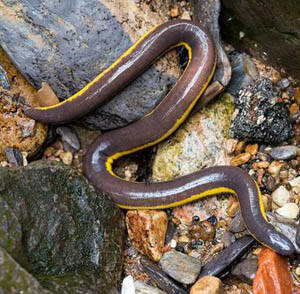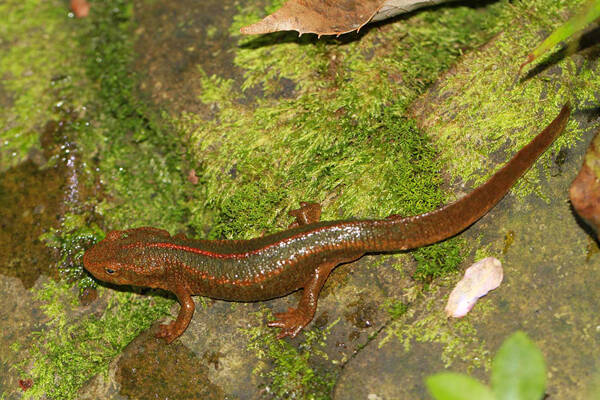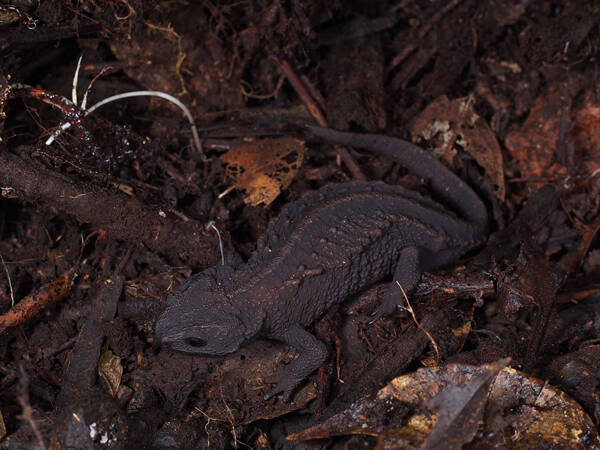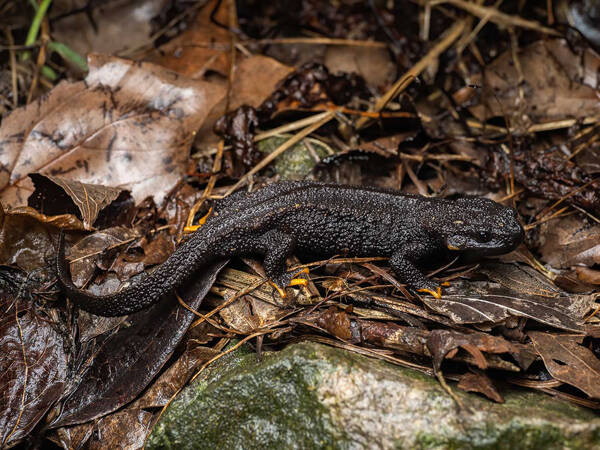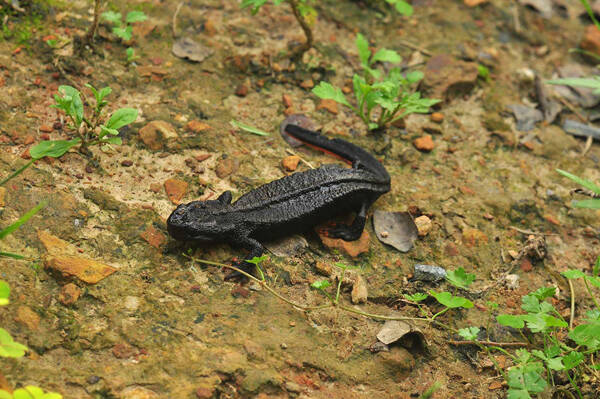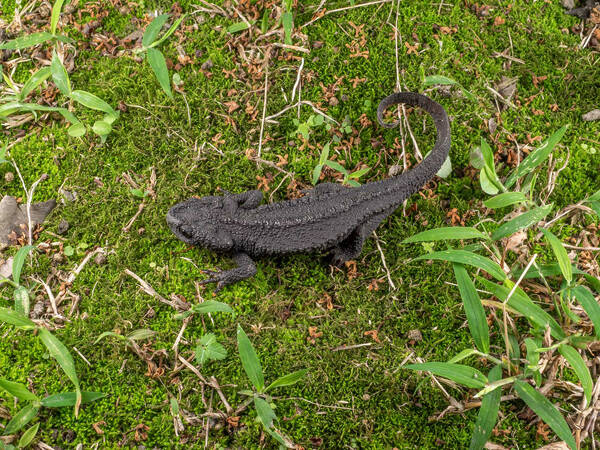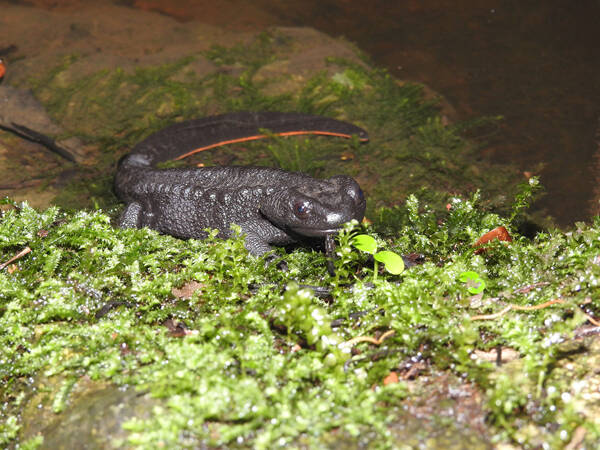Paramesotriton zhijinensis
IUCN
LCBasic Information
Scientific classification
- name:Paramesotriton zhijinensis
- Scientific Name:Paramesotriton zhijinensis
- Outline:Urodela
- Family:Caudata Salamandridae Cynodontidae
Vital signs
- length:112.7mm
- Weight:
- lifetime:
Feature
One of the rarest amphibians in the world
Distribution and Habitat
Endemic to China, distributed in Guizhou (Zhijin Shuangyantang).
Zhijin newt lives in mountain streams with gentle currents at an altitude of 1,300 to 1,400 meters or in ponds with groundwater outflow. The water is clear and the bottom of the water is mostly stones, mud and aquatic plants. Adult newts often hide under the stones at the bottom of the stream, in piles of rotten leaves or in the grass by the stream during the day and rarely move.
Appearance
The skin is covered with warts and moles, with a distinct ridge in the middle of the back, no costal grooves, and many transverse grooves on the trunk and tail; no neck folds. There are 4 fingers on the front feet and 5 toes on the back feet, without marginal membranes and webbed feet. The whole body is dark brown or light brown, with a distinct brown-yellow longitudinal stripe on each side from the back of the body to the tail; there are orange-red or orange-yellow spots on the ventral surface of the body, mostly in the shape of circles, ovals or strips; there are small orange-red round spots at the base of the front and hind limbs; the lower part of the tail is orange-red, which gradually disappears in the posterior section.
Details
Zhijin newt is a new species named by Li Song, Zhao Haitao and others based on the specimens collected in Shuangyantang, Zhijin County, Bijie City, Guizhou Province, and established based on its morphological characteristics and molecular information. It is another species of newts in Guizhou Province, in addition to the tail spot newt, Longli newt and fine mole newt. It is one of the rarest amphibians in the world. It has not been found in other parts of the world so far, and it is also one of the endangered animals that has received the least attention and research.
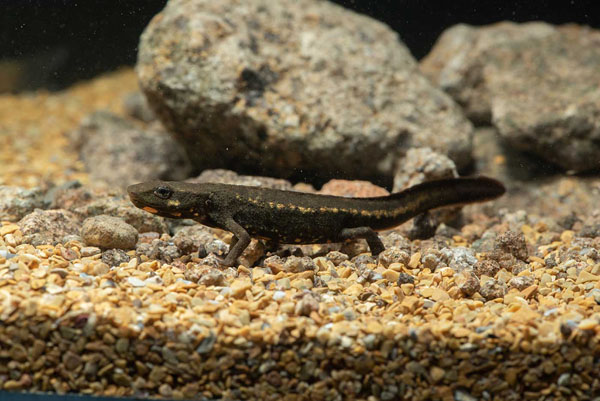
When swimming in the water, the newt keeps its limbs close to its body, moves slowly forward by swinging its tail, or floats to the surface to breathe air. It often goes out to move and forage at night, and often lies quietly at the bottom of the water when foraging. When aquatic insects and other small animals pass by its mouth, it quickly opens its mouth to bite them and slowly swallows them; or the newt slowly moves towards the food, aims its head at the food, suddenly attacks and bites the food, and then swallows it.
The Zhijin scrofula newt mainly preys on earthworms, shrimps and snails. When feeding them indoors, they are fed with earthworms and water worms, and they eat normally and grow well.
The Zhijin newt is a primitive species of amphibian and a precious biological heritage of mankind. In-depth research and protection of the Zhijin newt has important academic value and practical significance.


